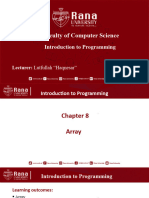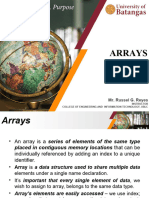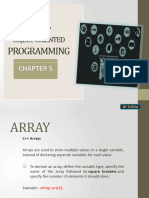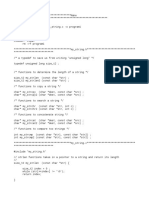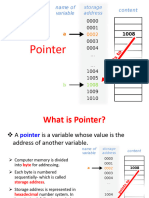0% found this document useful (0 votes)
14 views33 pagesC++ Arrays and Loops Guide
Multi-dimensional arrays are useful for representing grids, matrices and other spatial data structures. Some examples include:
- Image processing - Pixel data of images can be stored in a 2D array
- Game boards - Board games like chess or checkers use a 2D grid structure
- Spreadsheets - Excel sheets can be modeled as a 2D array of cells
- 3D modeling - Vertex data of 3D objects use multi-dimensional arrays
So in summary, multi-dimensional arrays allow modeling and working with data that has multiple axes or dimensions, which comes up often in fields like graphics, game development, scientific computing etc.
Uploaded by
abdoalsenaweabdoCopyright
© © All Rights Reserved
We take content rights seriously. If you suspect this is your content, claim it here.
Available Formats
Download as PDF, TXT or read online on Scribd
0% found this document useful (0 votes)
14 views33 pagesC++ Arrays and Loops Guide
Multi-dimensional arrays are useful for representing grids, matrices and other spatial data structures. Some examples include:
- Image processing - Pixel data of images can be stored in a 2D array
- Game boards - Board games like chess or checkers use a 2D grid structure
- Spreadsheets - Excel sheets can be modeled as a 2D array of cells
- 3D modeling - Vertex data of 3D objects use multi-dimensional arrays
So in summary, multi-dimensional arrays allow modeling and working with data that has multiple axes or dimensions, which comes up often in fields like graphics, game development, scientific computing etc.
Uploaded by
abdoalsenaweabdoCopyright
© © All Rights Reserved
We take content rights seriously. If you suspect this is your content, claim it here.
Available Formats
Download as PDF, TXT or read online on Scribd
/ 33




















